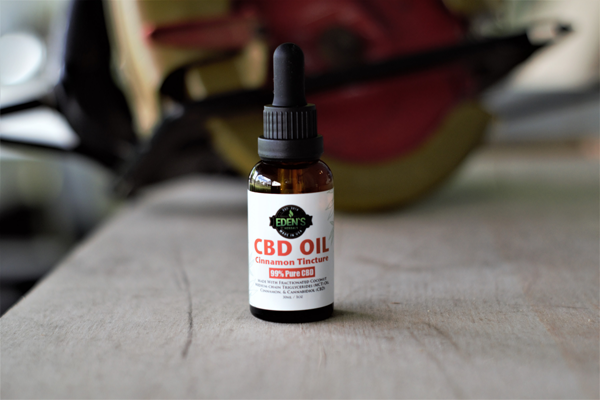
For the new CBD user, taking a tincture full of golden-colored oil can be a little intimidating. Is there a right way or wrong way to do it? And what happens if you feel nothing afterwards? Does it mean you wasted your money on CBD oil?
Before you start using CBD, it’s important to know the ins and outs of tinctures, and how to get the most out of a dropper full of organic, full spectrum CBD oil. Here’s seven tips and tricks you need to know about using CBD oil.
CBD Oil Can Be Taken Orally or Topically
One of the joys of CBD oil tinctures is their flexibility. While most people choose to ingest their CBD orally by holding it under the tongue, it can also be used topically to reduce inflammation and redness.
A 2018 peer-reviewed study published in Molecules discovered that CBD oil can be effective when used topically for pain and inflammation treatment. When used in concert with other treatments, the study concluded CBD could be effective when applied on the skin, or potentially through a patch to provide direct relief.
When You Take CBD Coincides with Why You Are Taking CBD
While its important to set a schedule for taking CBD oil, it’s equally important for that usage to coincide with your reason for taking CBD oil. For example: if you are taking CBD for pain management, take it at the same time every day, preferably in the morning. But if you are taking CBD for sleep, it’s important to take it before bed.
This theory was tested in a 2019 study published in The Permanente Journal. Participants who wanted to improve sleep were given CBD oil around dinner time. As a result of regular dosing, two-thirds of those in the test group reported improved sleep throughout the study.
Use CBD As Part of an Overall Health Regimen
While CBD can offer a lot of benefits, it’s equally important to keep it as part of your overall wellness plan. That’s why you should never stop any medication without your doctor’s permission, and use CBD in concert with any other medications you may have.
It’s equally important to talk to your doctor about your CBD plan, and investigate any conflicts it could have with your medications. By discussing your goals with your primary care physician, you can ensure CBD is the right supplement for your lifestyle.
Follow the Printed Label Instructions
The instructions on the side of your CBD tincture bottle aren’t just guidelines. Just like with any supplement, it’s important to follow the instructions and ensure you are using the CBD oil correctly.
A 2017 study in Cannabis and Cannabinoid Research shows that although it’s difficult to overdose on CBD oil, overuse can cause some unwanted side effects. In particular, the study showed those with liver conditions or epilepsy could experience drug conflicts or side effects from using high doses of CBD oil.
Work With Your Doctor to Find the Perfect CBD Level
Finally, it’s important to not just keep your doctor informed about your CBD use – you should also keep them informed about your experiences, benefits and side effects. Because your doctor is up-to-date with CBD research and pharmacology, they can be your biggest advocate in when and how you should take CBD oil.
Always follow your doctor’s advice, and let them know as you increase or decrease CBD oil usage. With their medical expertise and knowledge of your history, your doctor can help you get the most out of every tincture.
While it may feel scary at first, there’s a lot of potential relief that can be found in every bottle of high-quality CBD oil. Once you define your reason why you want to start, follow the directions and keep it as part of your overall regimen, you can get the most benefit from every serving of CBD oil for sale you invest in.
–
Melissa Popp, NuLeaf Naturals
As a digital marketing strategist with a passion for technology and travel, Melissa coaches her partners to connect with their audience through experience optimization, to retain more loyal visitors, create brand ambassadors, and increase conversion goals. You can find her online writing for TripSavvy, TechNorms, and The Emmys. Past clients include Microsoft, Hewlett-Packard, and Samsung.